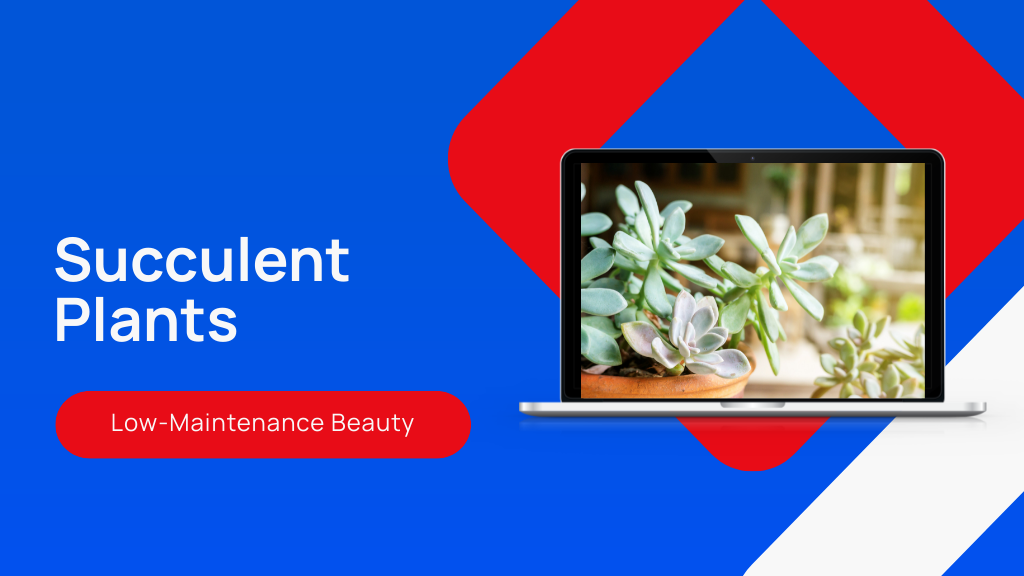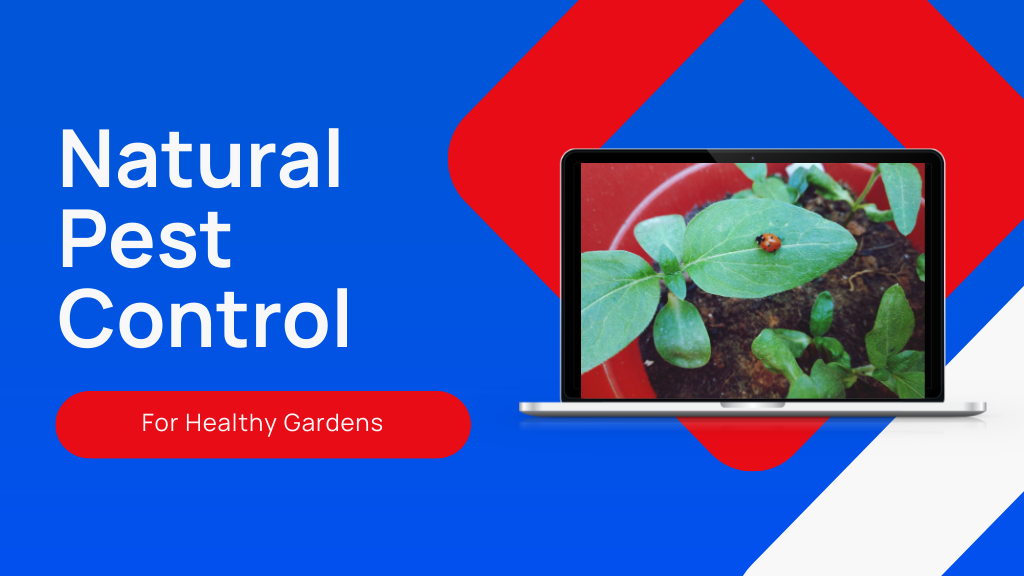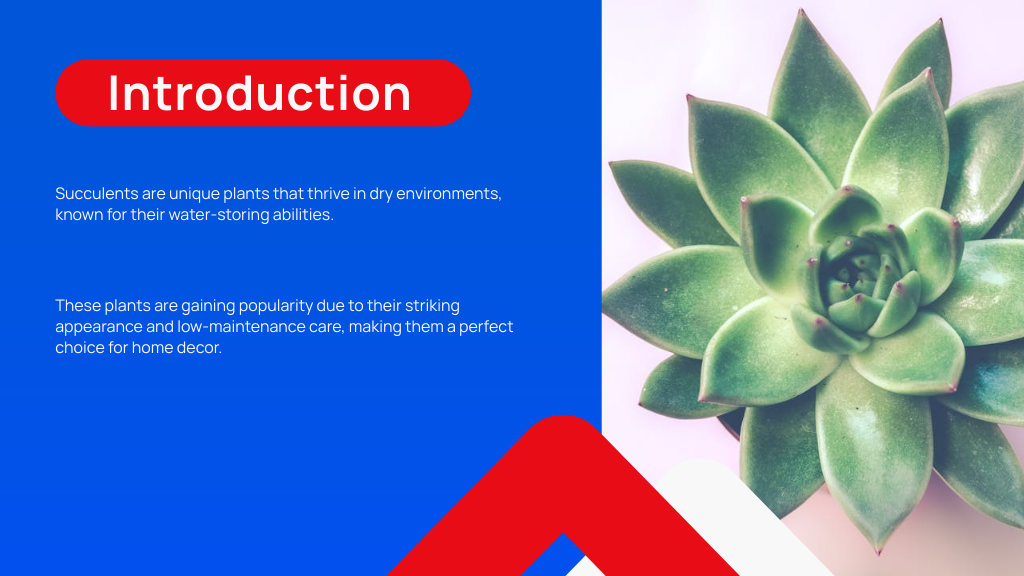
Succulents are unique plants with thick, fleshy tissues that store water, making them ideal for dry environments. They feature adaptations like shallow roots and waxy coatings to minimize water loss. You'll find various types, such as Echeveria and Aloe, each presenting diverse shapes and colors. Their low maintenance requirements make them popular for home decor, enhancing aesthetic appeal while improving air quality. Discover more about their care and environmental benefits as you explore this fascinating plant family.
Understanding Succulents: Definition and Characteristics
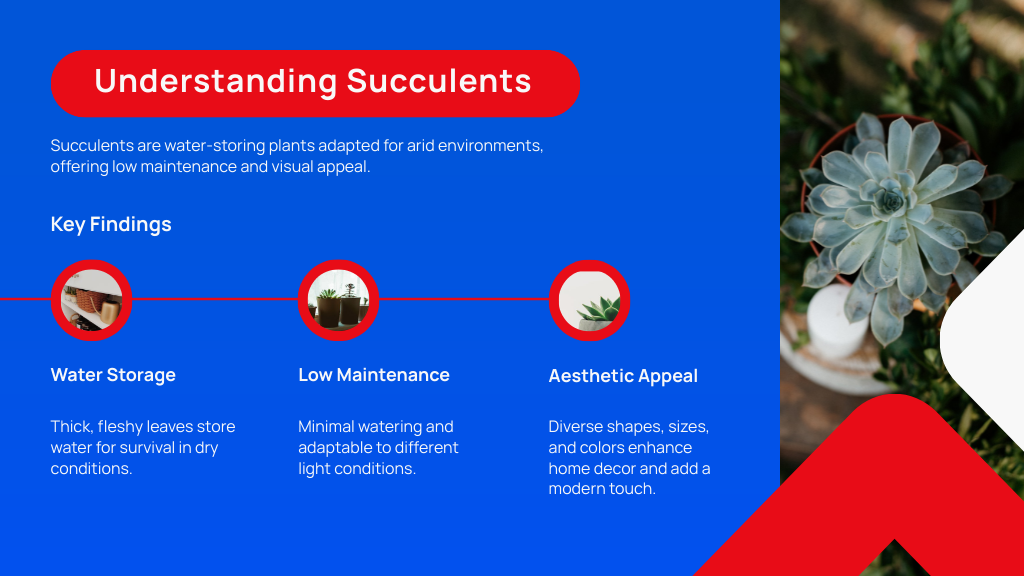
Succulents, often celebrated for their striking shapes and vibrant colors, are a diverse group of plants characterized by their thick, fleshy tissues, which are adapted to store water.
These succulent plants thrive in arid environments, where water conservation is essential. Their specialized tissues allow them to absorb and retain moisture efficiently, enabling them to survive long periods of drought. You'll notice that many succulents have a waxy coating, further reducing water loss by minimizing evaporation.
Their unique adaptations not only contribute to their resilience but also create a visually appealing aesthetic, making them popular choices for indoor and outdoor gardens. Understanding these characteristics helps you appreciate why succulent plants have become favorites among gardeners and plant lovers alike.
Types of Succulents: A Diverse Family
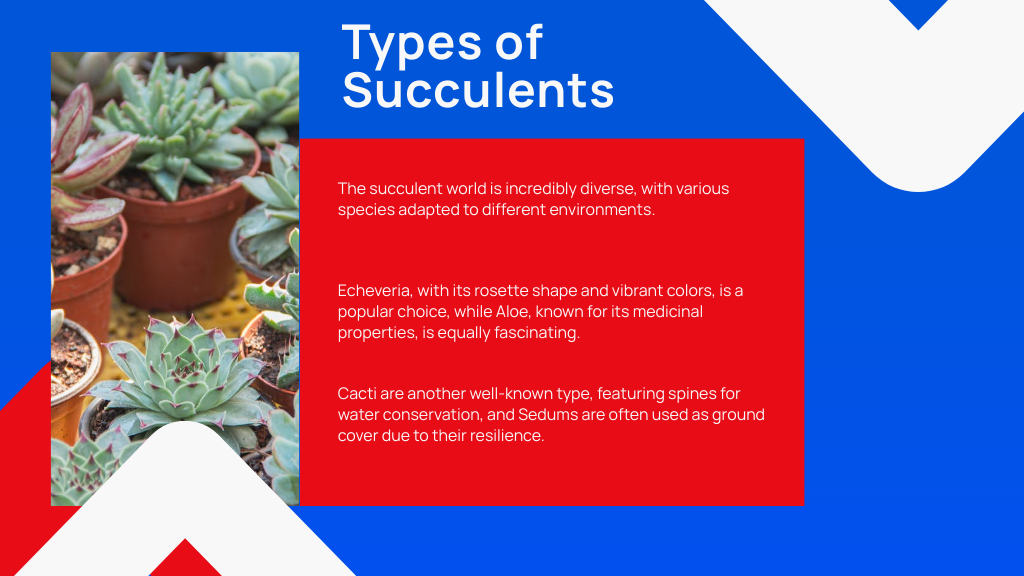
The world of succulents boasts an impressive variety of species, each with unique characteristics and adaptations. You'll encounter numerous types of succulent plants, including Echeveria, known for its rosette shape and vibrant colors, and Aloe, famous for its medicinal properties and spiky leaves. Cacti, a well-known type, feature spines instead of leaves, enabling them to conserve water.
Sedums are another popular group, often used as ground cover due to their resilience and low maintenance. Crassulas, such as the Jade Plant, are cherished for their thick, glossy leaves.
Each type of succulent offers different aesthetics and care needs, making it essential to choose the right one that fits your lifestyle and environment. Explore this diverse family to find your perfect companion!
How Succulents Adapt to Arid Environments
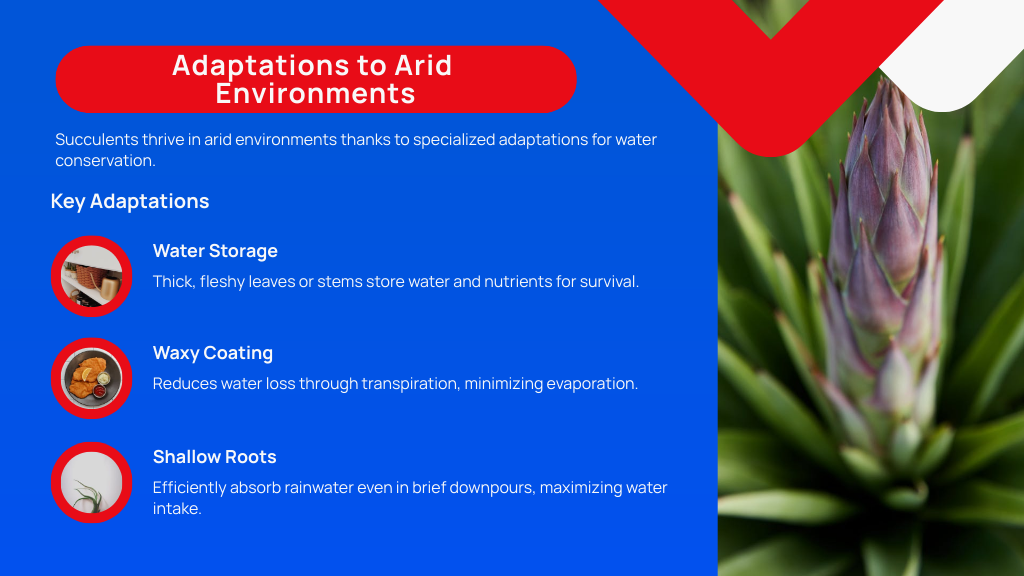
While many plants struggle to survive in arid environments, succulent plants thrive thanks to a range of specialized adaptations. One key adaptation is their thick, fleshy leaves or stems, which store water and nutrients, enabling them to endure long dry spells. These plants often feature a waxy coating, reducing moisture loss through transpiration.
Additionally, succulents have evolved shallow root systems that efficiently absorb rainwater, even in brief downpours. Their unique stomatal behavior allows them to open pores at night, minimizing water loss during the hottest parts of the day.
Many also possess a specialized metabolism called CAM (Crassulacean Acid Metabolism), which further aids in conserving water. These adaptations collectively make succulent plants remarkably resilient in harsh, arid conditions.
The Water Storage Mechanism in Succulents
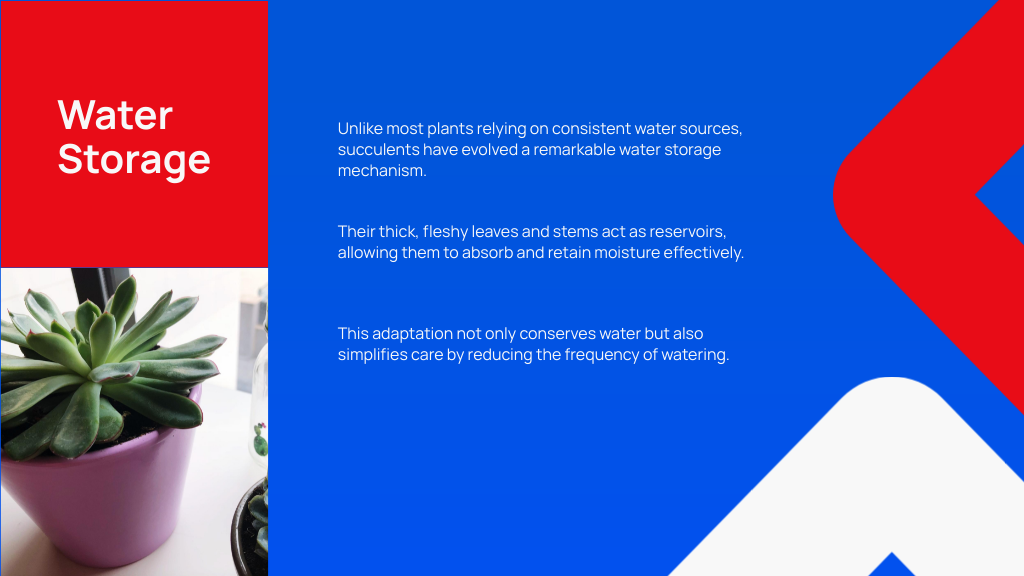
Although many plants rely on consistent water sources, succulents have developed a remarkable water storage mechanism that enables them to thrive in dry environments.
Their thick, fleshy leaves and stems act as reservoirs, allowing them to absorb and retain moisture. This adaptation not only conserves water but also supports succulent plant care by reducing the frequency of watering.
Here are the key aspects of their water storage mechanism:
- Water Storage Tissues: Specialized cells called parenchyma store water efficiently.
- Cuticle Layer: A waxy coating minimizes water loss through evaporation.
- Photosynthesis: Stomata close during the day, reducing transpiration.
- Root Structure: Shallow, extensive roots quickly absorb water during rainfall.
Understanding these features guarantees effective succulent plant care.
The popularity of Succulents in Home Decor
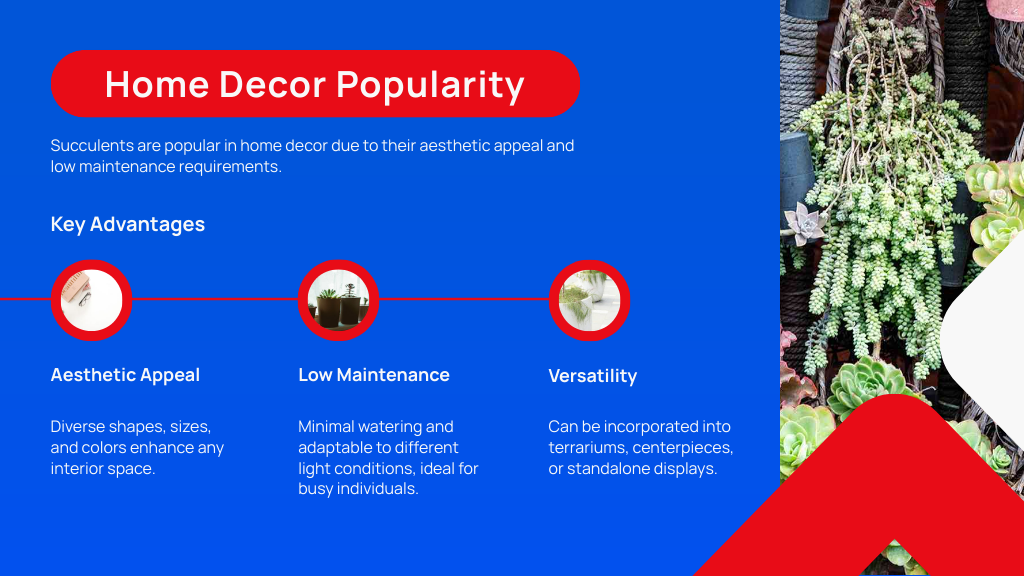
Succulents have gained immense popularity in home decor due to their aesthetic appeal and low maintenance care. Their diverse shapes and colors can enhance any interior space, adding a modern touch without overwhelming the design. Additionally, their minimal watering needs make them an ideal choice for busy individuals looking to incorporate greenery into their homes.
Aesthetic Appeal
The rise in popularity of succulents in home decor can be attributed to their striking visual appeal and versatility. Succulent plants come in various shapes, sizes, and colors, making them perfect for any aesthetic. Here are four reasons why they enhance your space:
- Unique Shapes: Their diverse geometric forms bring a modern touch to your decor.
- Color Variety: Succulents offer a spectrum of hues, from deep greens to vibrant reds, adding visual interest.
- Textural Contrast: The fleshy leaves create a tactile element that complements other decor elements.
- Flexible Arrangements: You can incorporate them into terrariums, centerpieces, or standalone displays, fitting seamlessly into any room.
These characteristics make succulent plants a favorite choice for those looking to elevate their home's aesthetic.
Low Maintenance Care
Their aesthetic appeal is just one aspect of why succulents have gained popularity; low-maintenance care is another significant factor. Succulent plants are ideal for busy individuals or those new to gardening, as they require minimal attention. They thrive in well-draining soil and need infrequent watering, typically every two to three weeks, depending on the environment.
Their ability to store water in their thick leaves allows them to endure dry conditions, making overwatering a common mistake to avoid. Additionally, succulent plants flourish in bright, indirect light, but can adapt to lower light levels. This resilience makes them perfect for various indoor spaces, ensuring you can enjoy your greenery without the constant upkeep.
Low Maintenance: The Allure of Succulents
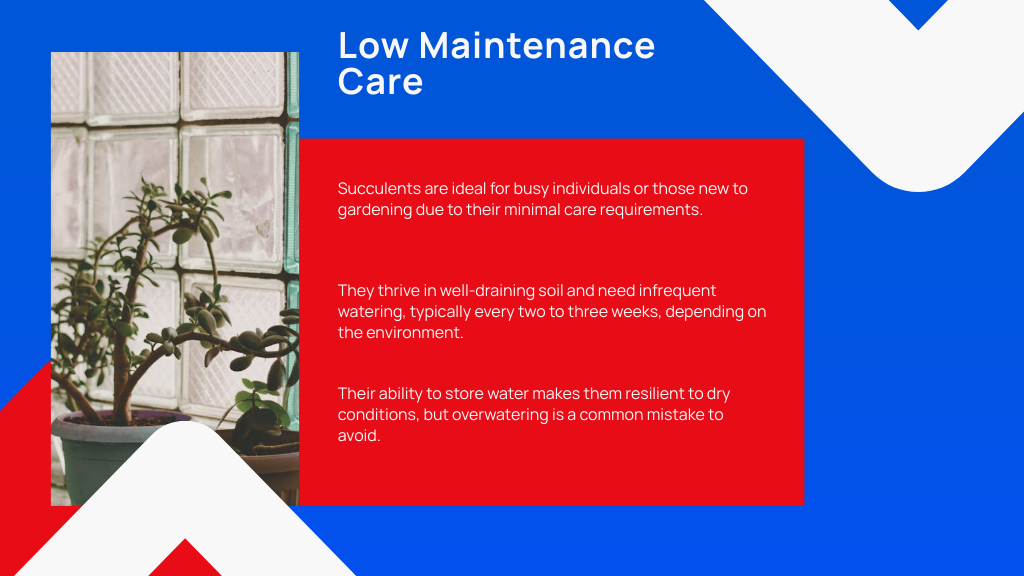
When you choose succulents, you simplify your watering routine, thanks to their ability to store water in their leaves, which means you can go longer between waterings.
Their resilience to environmental changes allows them to adapt quickly to different light and temperature conditions, making them ideal for both novice and experienced plant owners. This low-maintenance quality not only saves you time but also guarantees your plants remain healthy with minimal effort.
Watering Requirements Simplified
While many plants require consistent watering schedules, succulents offer a revitalizing simplicity that appeals to busy gardeners. To effectively care for succulent plants, keep these watering requirements in mind:
- Frequency: Water every 1-3 weeks, depending on the season and humidity.
- Method: Use the soak-and-dry method; water thoroughly and allow the soil to dry completely before the next watering.
- Soil: Guarantee well-draining soil to prevent root rot; a cactus mix works best.
- Signs of Need: Watch for signs like wrinkling or a change in color, indicating it's time to water.
Resilience to Environment Changes
Although succulents thrive in challenging environments, their resilience makes them an ideal choice for those seeking low-maintenance plants. Succulent plants have evolved specialized adaptations, such as thick, fleshy leaves and stems, allowing them to store water efficiently. This unique trait enables them to withstand extended periods of drought, making them perfect for busy individuals or novice gardeners.
Additionally, succulent plants can tolerate a range of temperatures and light conditions, from bright sunlight to partial shade. Their ability to recover from neglect, whether due to inconsistent watering or suboptimal conditions, further enhances their appeal. As a result, you'll find that adding succulent plants to your collection not only beautifies your space but also requires minimal effort on your part.
Growing Succulents: Tips for Beginners
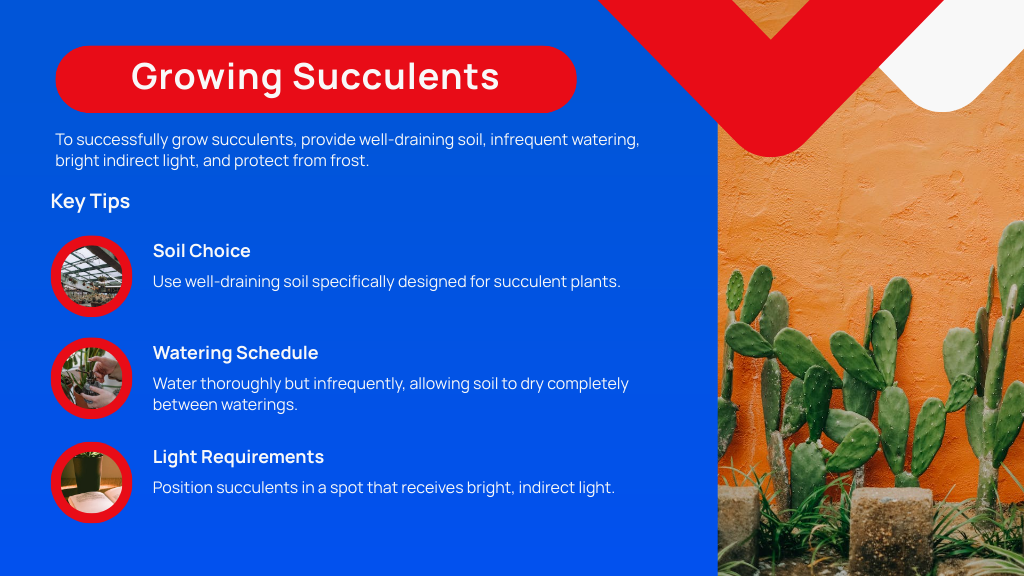
To successfully grow succulents, it's vital to understand their specific needs and preferences. Here are some essential tips for succulent plant planting:
- Soil Choice: Use well-draining soil specifically designed for succulent plants. A mix with perlite or sand enhances drainage.
- Watering Schedule: Water thoroughly but infrequently. Allow the soil to dry out completely between waterings.
- Light Requirements: Position your succulents in a spot that receives bright, indirect light. Too much direct sunlight can scorch their leaves.
- Temperature Control: Keep them in temperatures between 60°F and 80°F (15°C to 27°C). Protect them from frost.
Common Mistakes to Avoid With Succulents
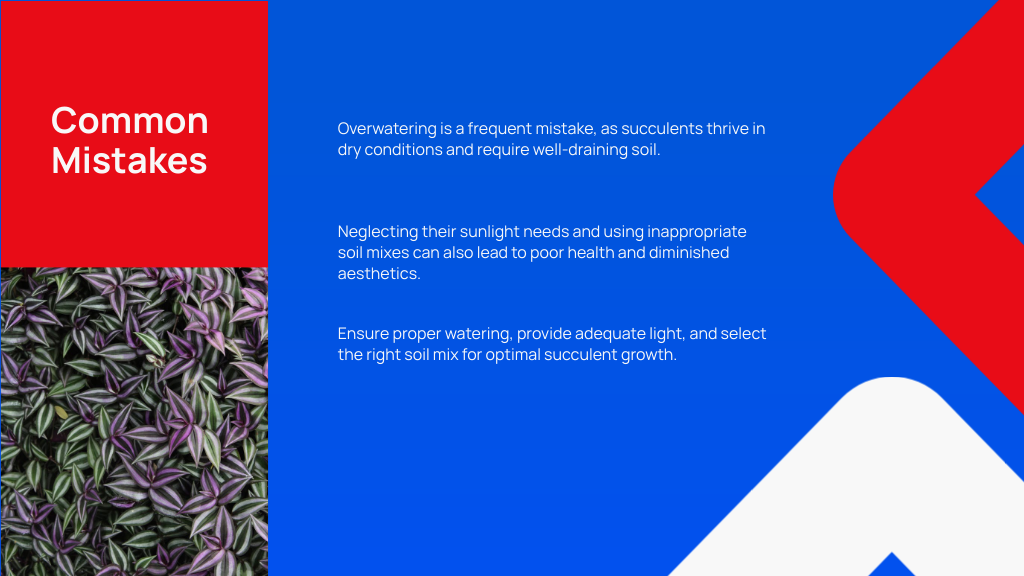
When caring for succulents, it's essential to avoid common pitfalls that can hinder their growth. Overwatering is a frequent mistake, as these plants thrive in dry conditions and require well-draining soil. Additionally, ignoring their sunlight needs and using inappropriate soil mixes can lead to poor health and diminished aesthetics.
Overwatering Plants Frequently
If you want your succulents to thrive, it's crucial to understand the importance of proper watering, as overwatering is one of the most common mistakes people make. Overwatering can lead to root rot and ultimately kill your succulent plants. Here are some tips to help you avoid this mistake:
- Check soil moisture: Always feel the soil before watering. If it's still damp, wait longer.
- Use well-draining soil: Confirm your potting mix allows excess water to escape.
- Choose the right pot: Select pots with drainage holes to prevent water accumulation.
- Adjust watering frequency: Water less frequently in winter, as succulents enter dormancy.
Ignoring Sunlight Requirements
While succulents are known for their resilience, neglecting their sunlight requirements can greatly hinder their growth and overall health. Indoor succulent plants typically thrive in bright, indirect sunlight, needing about six hours of light daily. Placing them in low-light areas can lead to elongated stems and faded colors, a sign they're stretching for light.
On the other hand, too much direct sunlight can scorch their leaves. It's essential to find that balance—consider rotating your plants to expose them evenly to light. If you're unsure, observe your plants regularly; if they appear leggy or discolored, adjust their light exposure accordingly.
Using the Wrong Soil Mix
Choosing the right soil mix is essential for the health of your succulents, as improper soil can lead to root rot and other issues. When selecting soil for succulent plants, avoid these common mistakes:
- Using regular potting soil: It retains too much moisture, causing root rot.
- Neglecting drainage: Verify your mix includes materials like perlite or coarse sand to enhance drainage.
- Not adjusting for pot size: The soil must suit the container; larger pots need a different mix to prevent water pooling.
- Ignoring pH levels: Succulents prefer slightly acidic to neutral soil; check pH to guarantee ideal growth.
Creative Ways to Display Succulents
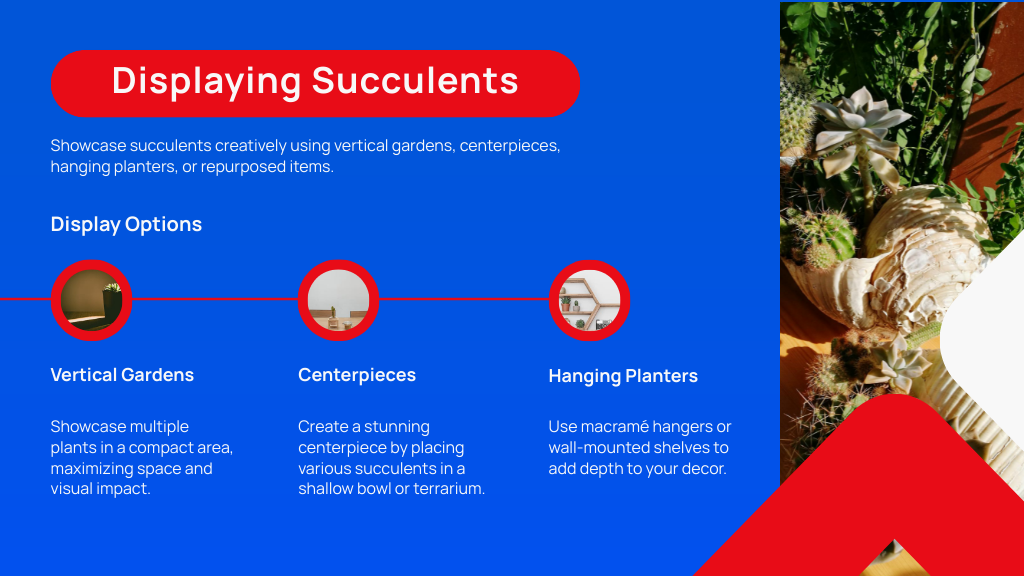
Since succulents are known for their diverse shapes and colors, finding creative ways to display them can enhance both their beauty and your living space. Contemplate using vertical gardens, which allow you to showcase multiple plants in a compact area.
You can also create a stunning centerpiece by placing various succulents in a shallow bowl or terrarium. Hanging succulent plants are another fantastic option; use macramé hangers or wall-mounted shelves to add depth to your decor.
Repurposing items like old teacups or wooden crates as planters adds a unique touch. Don't forget to contemplate lighting conditions when choosing display locations, ensuring your succulents receive the right amount of sunlight while enhancing your home's aesthetic appeal.
The Environmental Benefits of Succulents
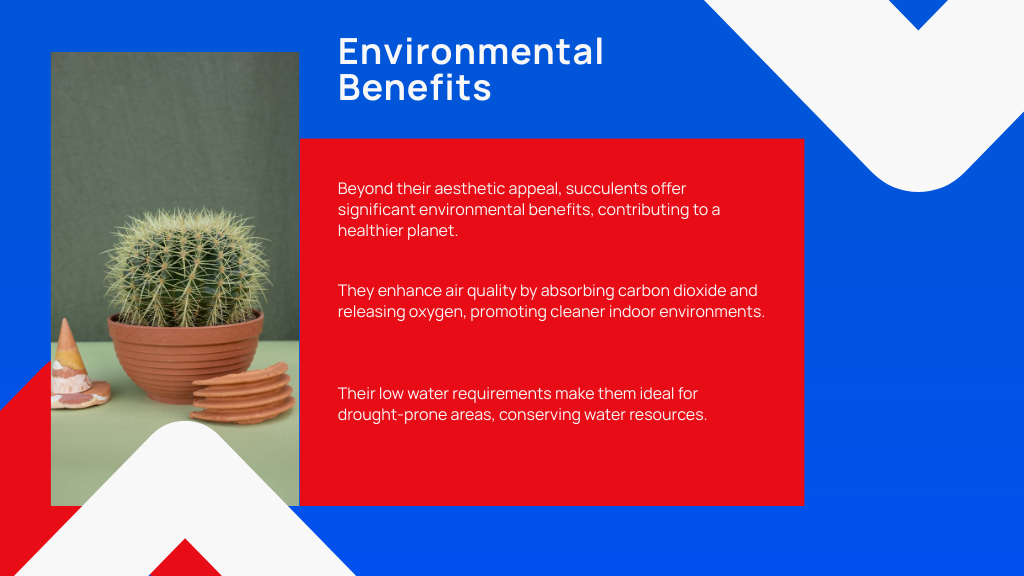
As you explore the world of succulents, you'll find that these hardy plants offer significant environmental benefits beyond their aesthetic appeal. Incorporating succulent plants into your space can enhance air quality, conserve water, and promote biodiversity. Here are some key advantages:
- Air Purification: Succulents absorb carbon dioxide and release oxygen, improving indoor air quality.
- Water Conservation: These plants require less water compared to traditional greenery, making them ideal for drought-prone areas.
- Soil Health: Succulents can prevent soil erosion with their extensive root systems, stabilizing the ground.
- Biodiversity Support: By planting succulents, you can attract pollinators like bees and butterflies, fostering a more diverse ecosystem.
Embracing succulent plants isn't just a style choice; it's a step toward a healthier planet.
Conclusion
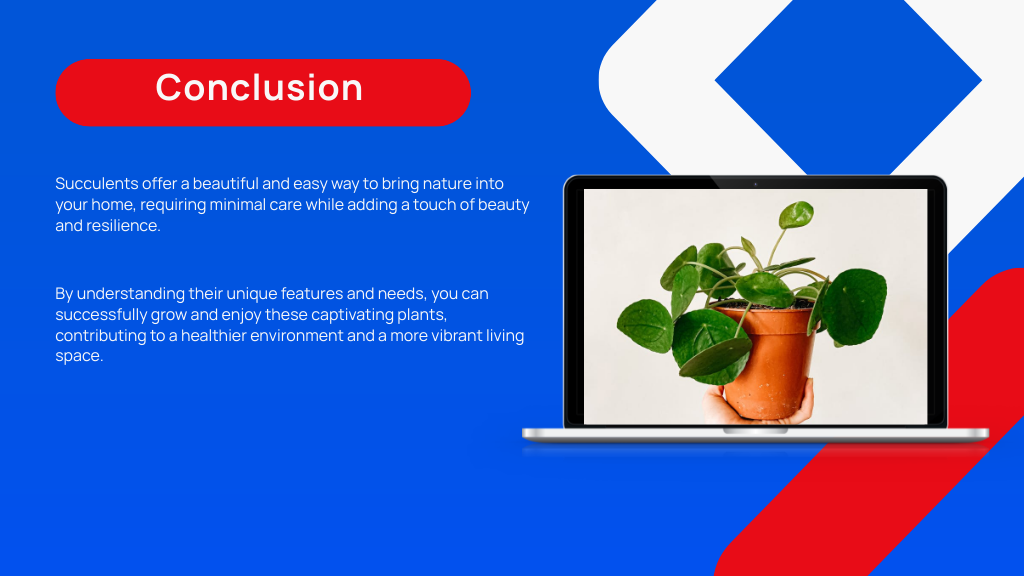
In conclusion, succulents are not just beautiful additions to your space; they're resilient plants that thrive with minimal care. As the saying goes, "The best things in life are free," and with succulents, you get low-maintenance beauty without breaking the bank. By understanding their unique characteristics and needs, you can enjoy these remarkable plants while enhancing your home decor. Embrace the charm of succulents, and let them bring a touch of nature into your life with ease.


